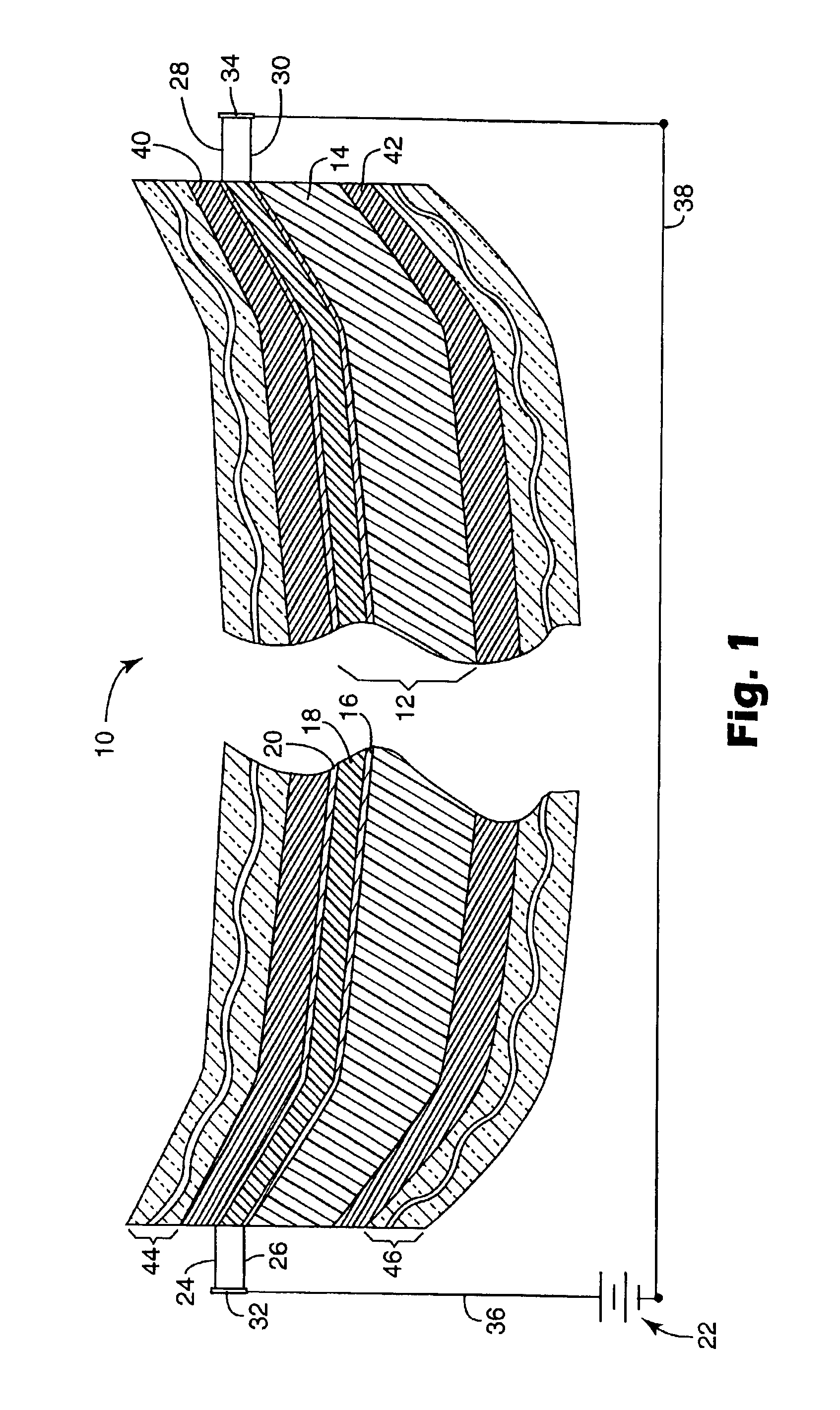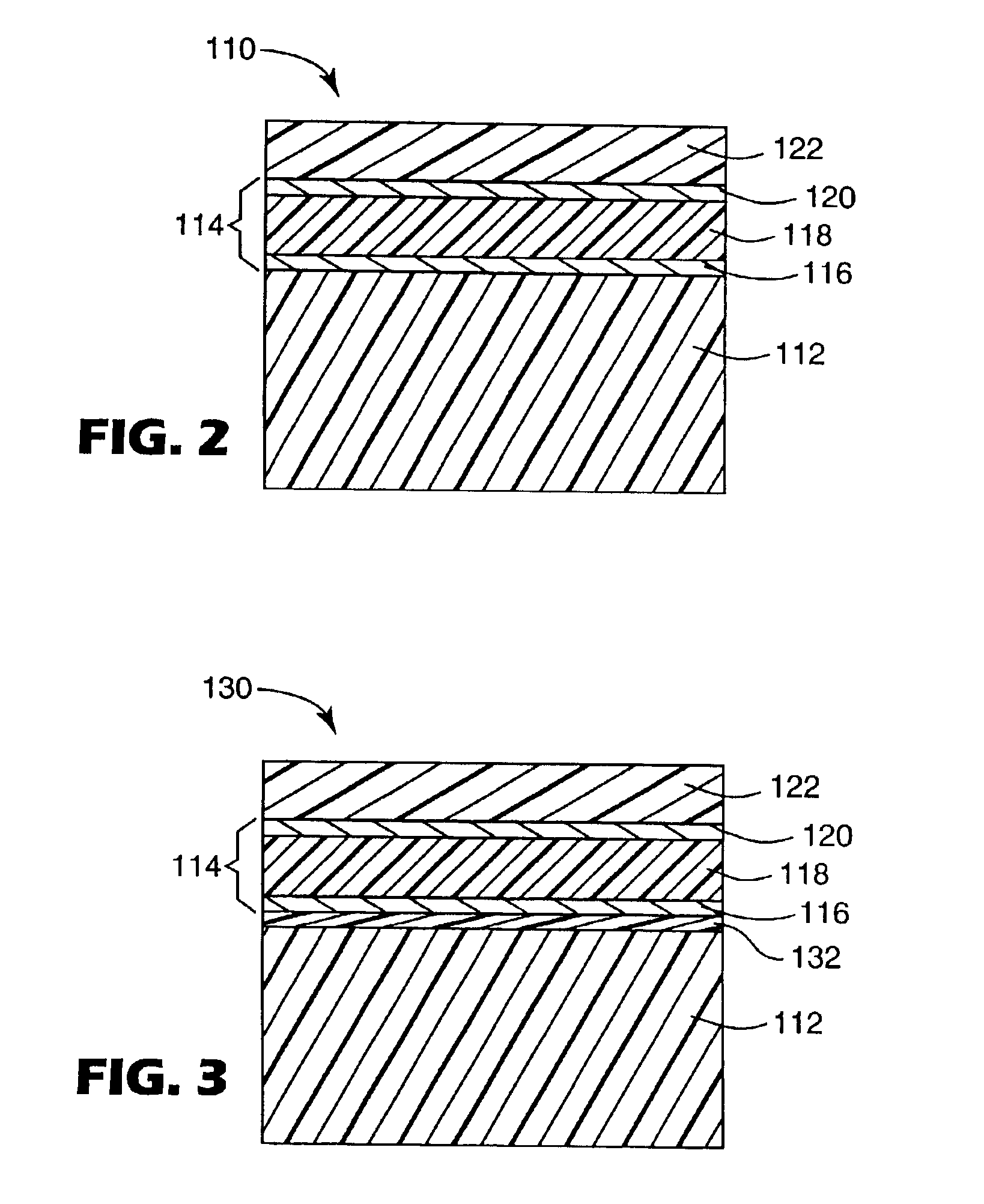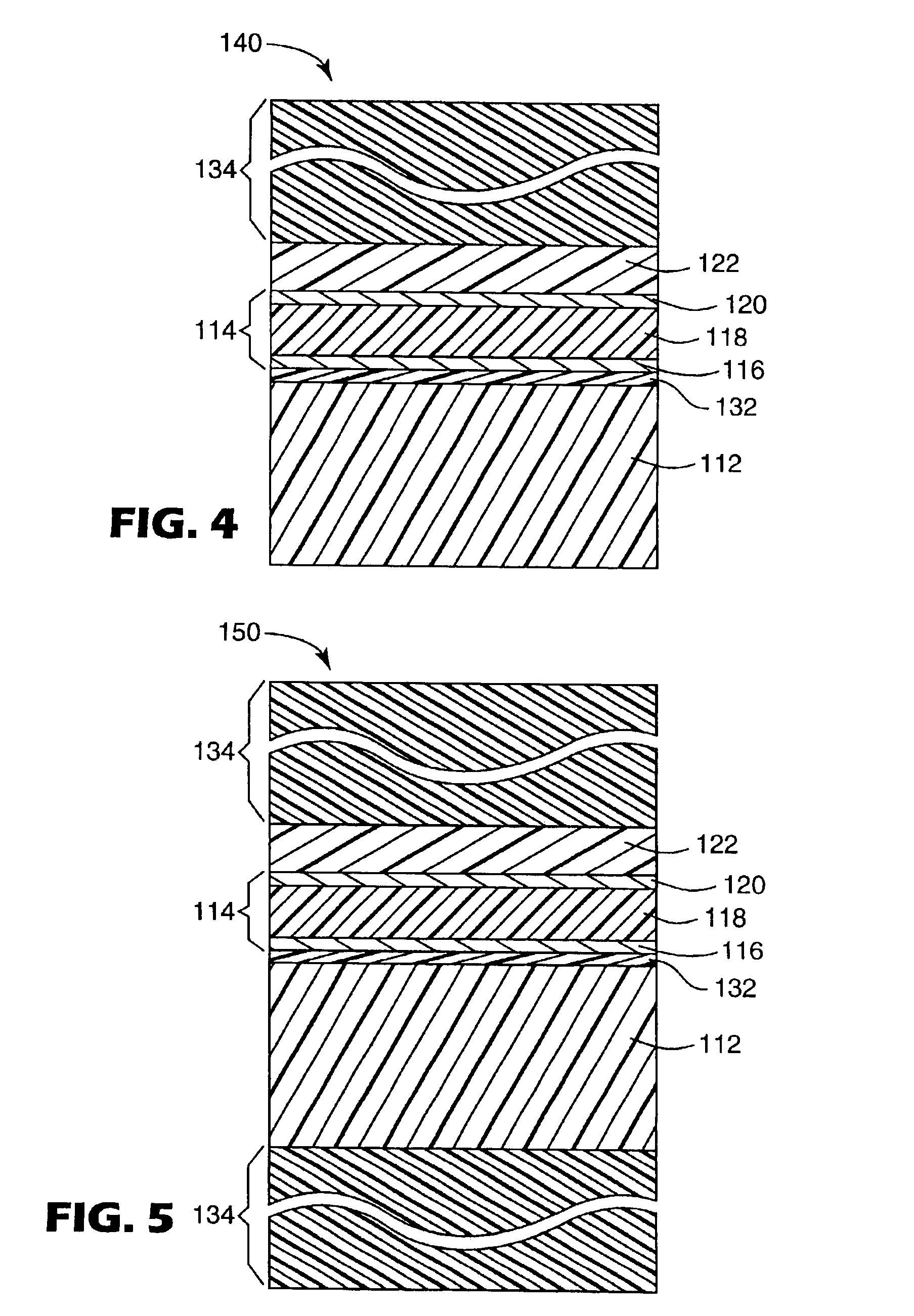Flexible electrically conductive film
a flexible, electrically conductive film technology, applied in the direction of optical filters, mirrors, spectral modifiers, etc., can solve the problems of electromagnetic energy leakage, scratches or fissures, hot spots, etc., to increase the resistance to delamination, maintain electrical conductivity, and maintain electrical conductivity
- Summary
- Abstract
- Description
- Claims
- Application Information
AI Technical Summary
Benefits of technology
Problems solved by technology
Method used
Image
Examples
example 1
[0091](Layer 1) An approximately 300 meter long roll of 0.05 mm thick by 508 mm wide PET support (MELINEX™ No. 453 film, DuPont Teijin Films) was loaded into a roll to roll vacuum chamber like that shown in FIG. 8. The pressure in the vacuum chamber was reduced to 3×10−4 torr. The support was sequentially plasma pretreated and acrylate coated during one pass at a web speed of 36.6 m / min. The plasma pretreatment utilized a chrome target and an unbalanced de magnetron operated at 1500 watts power (429 volts and 3.5 amps) under a nitrogen atmosphere with a nitrogen gas flow of 70 sccm. The acrylate coating employed a 50:50 mixture of IRR214 acrylate (UCB Chemicals) and lauryl acrylate that had been degassed for 1 hour by placing a container of the liquid monomer mixture into a bell jar and reducing pressure to approximately 1 millitorr. The degassed monomer was pumped at a flow rate of 2.35 ml / min through an ultrasonic atomizer into a vaporization chamber maintained at 274° C. Using a ...
example 2
[0097]Using the method of Example 1, a PET support was covered with a five layer acrylate / Ag / acrylate / Ag / acrylate optical stack, but using plasma pretreatment on both the top and bottom of the metal layers. The individual layer differences were as follows:
[0098](Layer 1) The support plasma pretreatment was as before but at 1000 watts power (402 volts and 2.5 amps) and a nitrogen gas flow of 102 sccm. The monomer flow rate was 2.45 ml / min and the vaporization chamber temperature was 276° C. The monomer vapor was condensed onto the moving web using a −21° C. drum temperature. The electron beam filament was operated at 8.0 kV and 6.5 milliamps.
[0099](Layer 2) The plasma pretreatment was at 1000 watts power (309 volts and 3.34 amps) and a nitrogen gas flow of 90 sccm. The silver was sputtered at 570 volts and 17.88 amps, a drum temperature of 21° C. and an argon gas flow of 93.2 sccm.
[0100](Layer 3) The silver surface was plasma pretreated prior to deposition of the spacing layer. The p...
examples 3-5
[0104]Using the method of Example 2, 5 layer infrared-rejecting acrylate / Ag / acrylate / Ag / acrylate optical stacks with silver layers of varying thickness were formed on a PET support. The resulting films were evaluated for appearance, transmission (Trans-Luminous Y (Tvis)), reflection (Refl-Luminous Y), solar heat gain coefficient (SHGC), shading coefficient (SC) and sheet resistivity. The processing conditions and evaluation results are set out below in Table 1.
[0105]
TABLE 1Ex. 3Ex. 4Ex. 5Layer 1Deposited materialMonomersMonomersMonomersLine speed (m / min)36.636.636.6Plasma (Watts)100010001000Drum temp (° C.)−21−21−21Monomer feed (ml / min)2.652.652.65Layer 2Deposited materialAgAgAgLine speed (m / min)35.136.638.1Plasma (Watts)100010001000Drum temp (° C.)262626Sputter power (KW)101010Layer 3Deposited materialMonomersMonomersMonomersLine speed (m / min)36.636.636.6Plasma (Watts)100010001000Drum temp (° C.)−19−19−19Monomer feed (ml / min)2.652.652.65Layer 4Deposited materialAgAgAgLine speed (m / ...
PUM
| Property | Measurement | Unit |
|---|---|---|
| wavelength region | aaaaa | aaaaa |
| wavelength region | aaaaa | aaaaa |
| distance | aaaaa | aaaaa |
Abstract
Description
Claims
Application Information
 Login to View More
Login to View More - R&D
- Intellectual Property
- Life Sciences
- Materials
- Tech Scout
- Unparalleled Data Quality
- Higher Quality Content
- 60% Fewer Hallucinations
Browse by: Latest US Patents, China's latest patents, Technical Efficacy Thesaurus, Application Domain, Technology Topic, Popular Technical Reports.
© 2025 PatSnap. All rights reserved.Legal|Privacy policy|Modern Slavery Act Transparency Statement|Sitemap|About US| Contact US: help@patsnap.com



